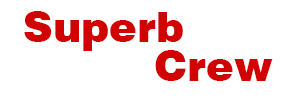
Outreach is an important phase of the sales process (especially in B2B) but it’s often misunderstood and poorly implemented. For anyone outside the sales team, outreach may simply mean placing a call or sending an email to a business’s contact person.
When done right, sales outreach is a multi-layered process with the main purpose of engaging with prospects, collaborators, or customers (current or former). Nowadays, this engagement can happen via a series of channels, and if you want it to work, you also have to understand the role personalization plays in this.
However, even if content marketing and personalization are part of the outreach process, it’s important to understand that marketing and sales outreach are two different processes. Both are necessary for a successful campaign, but in the B2B world, you’ll also need automation.
What is Outreach Automation?
Even though automation is not a new term, there are still businesses out there that don’t grasp the full meaning of the concept.
In simple terms, outreach automation is made possible by modern software tools such as Salesflow.io, which is a LinkedIn automation software, that allows users to set and schedule various outreach activities (sending & replying to emails, sending contact messages, providing interested users with more context, and so on).
As each platform is different, it’s difficult to discuss specific features. However, it’s important to know that automation tools are reliable and can help bring in new leads and increase sales. The only condition is to use accurate data and make the correct settings.
Lead generation tool ContactOut can help you find emails and phone numbers, save and organize leads from Linkedin.
How Do You Automate Outreach to Generate Leads?
#1: Get Comfy with Creating Segmented Email Lists
Let’s continue with the example of a LinkedIn automation software tool. In this case, you have a database of accounts you want to connect with, but you already know that reaching out to all of them, in the same way, won’t work.
This is why the first step in your outreach campaign is to split the database into several segments. Here are a few segments that are quite common:
- People who don’t know who you are and have never heard of your brand
- People who have heard of your brand but never interacted with it
- People who have been in contact with the company but the trail went cold
- People who have shown some interest in your products
Of course, the list can go on, but it’s clear what we mean when we say segments. Each bullet in the list above is a segment of your audience and should be addressed in a specific manner. For this, you create an email template that the automation software can use in combination with personal details (name, person’s function, etc.) to address that person’s unique needs and position.
#2: Create a Line of Events
Once you send your first outreach emails, you have to design a few paths that your automation software can follow.
For instance, if a person accepts your LinkedIn connection request, this shows some interest in your proposal or message. In this case, the automation software can follow up with a message/email containing links to useful blog articles, social media channels, and more (brand awareness).
On the other hand, if someone replies to your message with an invitation to chat, the software can send you a notification and upgrade the lead’s status in your database.
Overall, an outreach automation campaign should have several predefined lines of action that allow the software to act as soon as possible. This will keep the conversation with the leads going and growing.
#3: Work in Small Batches & Constant Monitoring
While automation software tools can take over lots of redundant tasks, you want to keep a close eye on the campaign’s progress. That’s why it’s best to work in small batches at a time (maximum 100 leads per batch).
This step is quite important when you first start using automation in your campaign as it allows you to understand how things work. Plus, as you run more campaigns, you can gather more data on how people respond to your outreach.
This data can be compiled and used to improve the way you integrate automation in the business flow.
Wrap Up
Automation tools are extremely useful in lead generation and sales outreach, but you can’t get good results if you don’t have a solid base. In this case, the base is built by applying automation in small increments and working hard on creating the right action paths.
Once things start to work, you’ll notice that it becomes easier to let the software tools do their job while you focus on finding new outreach channels (such as Linkedin, social media, email campaigns, and so on).
Overall, automation can’t do the job of a sales representative, but it can take over the boring and redundant parts of the work.
Activate Social Media:


